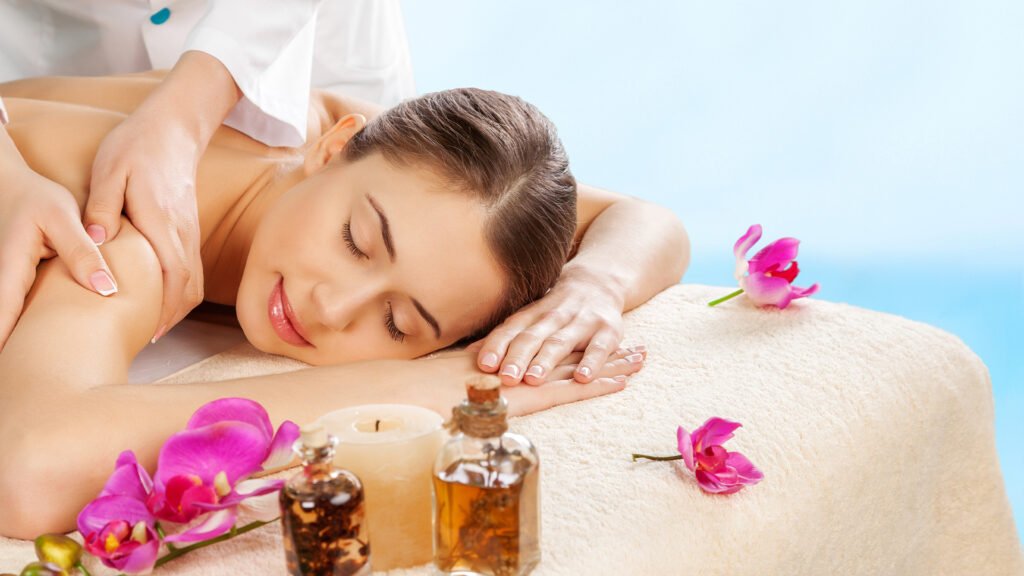People have been looking for the benefits of healing mineral waters and hot springs for many years. We have been using them for so long that we don’t even know when it all began, probably back when early humans found them. But how have these ancient mineral waters and hot springs changed into the modern culture that we have today?
One of the oldest examples of spa treatments is the Finnish sauna, believed to have started around 7,000 B.C., but there isn’t much-written information from that time.
Let’s dive into the adventure! How did these ancient treasures shape the modern culture of wellness that we love today? It’s like pulling out hidden secrets from the past.
If you are in search of the finest spa service, check out – Sreechakra to experience cross massage in Ernakulam.
The word ‘spa’
The word “Spa” we use today is believed to originate from a village in Belgium called Spa. In ancient times, this village was famous for its warm mineral springs, where Roman soldiers would take a break to soothe their tired muscles and heal their battle wounds. The village caught the attention of even historical figures like Pliny the Elder.
This is what inspired the idea of a modern spa where people spent time for relaxation and healing treatments.
Origin of Spa Bathing
The origins of spa bathing rituals can be traced back to ancient civilizations like the Romans, Mesopotamians, Egyptians, and Greeks. The concept of bathing in hot water and enjoying spa treatments was popular in those times. The Greeks were among the first to use various baths, including hot water tubs and hot air baths called laconica. The Romans adopted this practice and built larger and more luxurious baths called balneum and thermae. These baths could accommodate thousands of bathers at once.
The popularity of spas declined with the fall of the Roman Empire, but the belief in the healing properties of water continued. Towns with natural springs became popular spa destinations during the Renaissance. Spa in Belgium, Paeffers in Switzerland, Baden-Baden in Germany, and Bath in England were some of those. The waters from these springs were considered to have medicinal and curative qualities. Lessen all your tension and body pain with our massage center in Ernakulam – Sreechakra.
Modern spa treatments
As medical science advanced, allopathy became dominant in the early 20th century, leading to the decline of natural healing processes. Spas transformed into vacation centers serving mostly the wealthy. Some spas are adapted by offering a mix of fitness and beauty treatments in places called day spas. Nowadays people started caring more about their health and well-being which caused the popularity of spa culture again. Modern spas have different ways of offering treatments but still, they continue doing water therapy as the central part of their routine.
Spa treatments now include various types of therapies and beauty treatments. Meditation, yoga, massages, facials, and more are some examples. Asian people are especially good at providing spa treatments that focus on the connection between the mind and body. Refresh your mind and body with us, visit Sreechakra –a luxury spa in Ernakulam.
Spa and modern technology
Nowadays, vacation resorts don’t always need natural hot or cold springs to be built around. Instead, they create spas within the resort itself. With modern technology, they can make all kinds of spas. These spas still focus on the healing power of water and offer many treatments using both old and new methods. In the modern era, people know the importance of relaxation and refreshment by reducing stress and taking care of overall well-being. This is why spas are very popular these days.
Self-care should always be a concern, refreshing one’s mind and body will help one achieve a peaceful life, call us for queries – Sreechakra, a massage spa in Ernakulam.
Summary
The practice of spa bathing rituals can be attributed to ancient civilizations such as the Romans, Mesopotamians, Egyptians, and Greeks, who did bathing in hot water and various spa treatments. The popularity of spas lessen after the fall of the Roman Empire but brought back during the Renaissance. As modern medical science, particularly allopathy, gained prominence in the 20th century, natural healing processes took a backseat, and spas transformed into luxurious vacation centers serving mainly the wealthy. However, as people became more health-conscious, spa culture experienced a rebirth. Modern spas offer a wide array of treatments beyond traditional water therapy, including meditation, yoga, massages, facials, and other beauty therapies. Additionally, Asian cultures have excelled in providing spa treatments that emphasize the mind-body connection.

